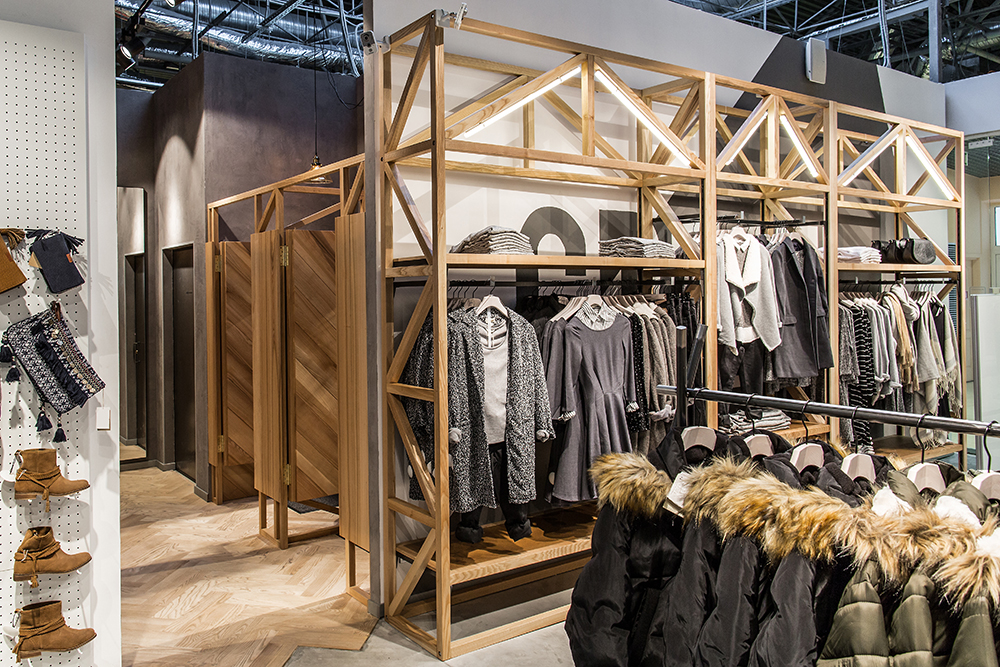Shoplifting in fitting rooms

When it comes to store security, the fitting room remains one of the most challenging areas for retail outlets to monitor and guard against shoplifting.
By nature, fitting rooms are private, out of CCTV range and offer a venue for the would-be shoplifter to conceal items before removing them from the store.
There are, however, a host of tools and techniques that retailers can use to minimise shoplifting in change rooms. Here’s an insight into what’s available.
The fitting room
For apparel stores, the fitting room is a necessity, offering customers a convenient, private space where they can try on clothes before they buy.
Change rooms allow shoppers to engage with items before making a purchase, while giving retailers the chance to showcase their range, offer great customer service, and even upsell additional items and accessories.
On the downside, the fitting room is often one of the few places in-store where consumers (and therefore shoplifters) are completely out of sight, making them a notoriously prevalent site for shoplifting.
Theft in the apparel sector
According to the latest Global Retail Theft Barometer apparel specialists experience the second highest retail loss statistics globally, at a rate of 1.8%.
The most commonly stolen items are those which are easy to conceal, and include: footwear, fashion accessories, sports-related clothing, sunglasses, and handbags.
In the Asia Pacific region, including Australia, the main contributor to retail loss in the apparel sector is shoplifting, with 67% of loss attributed to consumer theft.
In Asia Pacific, denim items are the most appealing apparel for shoplifters, followed by handbags, accessories, lingerie/intimate apparel, and footwear.
Common theft techniques
The fitting room offers shoplifters the unique opportunity to conceal items on their person, in specialist bags or to interfere with EAS tags and pricing.
Shoplifting techniques used in change rooms most often include:
Layering – where a person takes numerous items into a change room, but emerges with fewer, having layered items of store apparel beneath their own clothes.
Boosting – a premeditated approach to shoplifting that involves the use of purpose-built boxes/bags where items can be concealed in secret compartments. This approach may also utilise bag linings designed to interfere with older EAS systems.
Price switching – A commonly used strategy by the amateur thief that involves removing a price tag from a cheaper item and affixing it to a more expensive product.
Loss prevention in the fitting room
As with most areas of retail security, guarding the change room against shoplifting requires an integrated approach of staff training, and available technology.
Staffing – Adequately trained staff are the first line of defence against shoplifting throughout a store, but particularly when it comes to the change room.
One of the most successful staff-based loss prevention strategies for the fitting room is to have greeters.
A greeter not only adds an element of customer service that enables consumers to seek advice, and obtain different apparel items and sizes, but also allows a store to limit and count how many items go in and come out of a fitting room. In change rooms where there are multiple cubicles, a numbered tag system is often effective, but staff should also be trained in best practice.
This includes watching and listening for suspicious activity, and ensuring unwanted items are removed when new items are brought to a customer.
In smaller stores where it’s not feasible to have dedicated change room greeters, the fitting room should be positioned near the counter, so staff can readily monitor who is going in and coming out, along with the items they have with them.
Fitting room design – The general design of a change room, along with technology, can also assist with loss prevention in the change room.
Although designed to be private, fitting rooms should feel as though there is a level of visibility. This may involve positioning fitting rooms near high traffic areas, including features like include short doors (so feet can be seen), and visible deterrents like signage, or prominent CCTV outside the change room entry.
Fitting room technology – Purpose-designed technology like FittingRoom Guard is created to detect tag detachers within change-rooms, allowing staff to be alerted when a would-be thief attempts the removal of EAS tags.
The system is RF and AM compatible and involves the simple installation of antenna and a controller that can cover a number of changerooms. Fitting Room Guard is available from Vitag.
Best practice EAS – EAS plays a vital role in ensuring staff are alerted when a shoplifter attempts to leave the store with an item, but the key is to ensure tags cannot be removed in the change room.
You can learn more about selecting the right security tags here.
In short, it’s recommended apparel retailers opt for security tags with a minimum strength of SuperLock, use round head tags for tamper resistance where feasible, and look to features like large pin heads, which discourage forced removal.
The change room remains a challenging yet necessary area for apparel retailers to police against shoplifting. It requires a balance of monitoring, deterrence, customer service and design. Yet together these features all combine to reduce, if not eliminate theft.